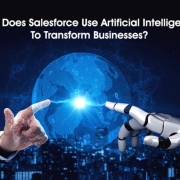The Role of DevOps in Accelerating Digital Transformation
Introduction
In today’s rapidly evolving digital landscape, businesses are under immense pressure to innovate and adapt swiftly. Digital transformation, which encompasses the integration of digital technology into all areas of a business, fundamentally changes how organizations operate and deliver value to customers. Central to this transformation is DevOps, a set of practices that combines software development (Dev) and IT operations (Ops). DevOps aims to shorten the development lifecycle and provide continuous delivery with high software quality. In this blog, we will explore how DevOps plays a crucial role in accelerating digital transformation.
Understanding DevOps
DevOps is more than just a set of tools; it’s a cultural shift that promotes collaboration between development and operations teams. It emphasizes automation, continuous integration, continuous delivery, and iterative improvement. By breaking down silos between traditionally separate development and operations teams, DevOps fosters a collaborative environment where teams work together towards a common goal.
Key Components of DevOps
Continuous Integration (CI): Developers frequently integrate code into a shared repository, where automated builds and tests are run. This practice helps detect issues early and ensures that the code is always in a deployable state.
Continuous Delivery (CD): Extends CI by automatically deploying code to production after passing all stages of the pipeline. This ensures that new features, bug fixes, and configurations are released to users quickly and safely.
Infrastructure as Code (IaC): Manages and provisions computing infrastructure through machine-readable scripts, rather than through physical hardware configuration or interactive configuration tools. This ensures consistency and reduces human error.
Monitoring and Logging: Continuous monitoring of applications and infrastructure to detect issues and improve performance. Logging provides a record of events that can be used for troubleshooting and analysis.
Collaboration and Communication: Tools and practices that enhance communication and collaboration among teams, fostering a culture of shared responsibility and collective ownership.
The Role of DevOps in Digital Transformation
1. Accelerating Time-to-Market
One of the primary goals of digital transformation is to innovate and deliver new products and services quickly. DevOps accelerates time-to-market by streamlining development and deployment processes. Automated testing and continuous delivery ensure that new features and updates can be released rapidly, allowing businesses to respond swiftly to market changes and customer needs.
2.Enhancing Agility and Flexibility
Digital transformation requires businesses to be agile and adaptable. DevOps practices, such as continuous integration and delivery, enable organizations to adapt to changes quickly and efficiently. By automating repetitive tasks and reducing manual interventions, DevOps allows teams to focus on innovation and improvement.
3. Improving Collaboration and Communication
Effective digital transformation relies on collaboration across various departments. DevOps fosters a culture of collaboration by breaking down silos and encouraging communication between development, operations, and other teams. This collaborative approach leads to more cohesive and effective strategies for digital transformation.
4. Ensuring High Quality and Reliability
In the digital age, customer expectations for quality and reliability are higher than ever. DevOps practices such as automated testing, continuous monitoring, and infrastructure as code ensure that applications are robust, reliable, and performant. This not only enhances customer satisfaction but also reduces downtime and maintenance costs.
5. Driving Innovation
DevOps enables continuous improvement through iterative development and feedback loops. By adopting DevOps, organizations can experiment with new ideas, gather feedback quickly, and iterate on solutions. This fosters a culture of innovation and continuous improvement, which is essential for successful digital transformation.
Conclusion
DevOps is a critical enabler of digital transformation, providing the tools and practices necessary to innovate quickly, enhance agility, and maintain high quality. By fostering a culture of collaboration and continuous improvement, DevOps helps organizations navigate the complexities of digital transformation and stay competitive in a rapidly changing landscape. As businesses continue to embrace digital transformation, the role of DevOps will only become more significant in driving sustainable growth and innovation.











 020-46036204, 46036206
020-46036204, 46036206 +971502180530
+971502180530 info@nwssoft.com, hr@nwssoft.com, jobs@nwssoft.com
info@nwssoft.com, hr@nwssoft.com, jobs@nwssoft.com  NWS Soft Consulting Pvt. Ltd.
NWS Soft Consulting Pvt. Ltd.